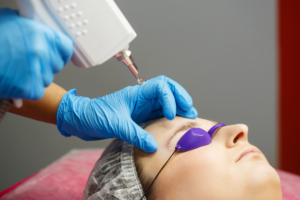 The latest Office for National Statistics (ONS) data shows that average private rental prices paid by UK tenants increased by a record rate of 5.1% in the year to June 2023. This will provide little relief to the estimated 1.4 million UK homeowners, including many buy-to-let landlords, with mortgages that are due to expire in 2023, who face a steep increase in their monthly payments following recent Bank of England base interest rate rises.
The latest Office for National Statistics (ONS) data shows that average private rental prices paid by UK tenants increased by a record rate of 5.1% in the year to June 2023. This will provide little relief to the estimated 1.4 million UK homeowners, including many buy-to-let landlords, with mortgages that are due to expire in 2023, who face a steep increase in their monthly payments following recent Bank of England base interest rate rises.
The impact appears to be already being felt, with ONS data collected in July finding that 45% of mortgage holders had seen their payments rise in the last six months, while 40% of tenants and mortgage holders reported that it was very or somewhat difficult to afford their rent or mortgage payments. Successive hikes have seen the interest rate on outstanding fixed-rate mortgages rise from 2.08% in November 2022, to over 6% in August 2023, meaning that many homeowners are facing increases of more than 50% on their monthly mortgage payments.
On top of the financial pain caused by rising interest rates, buy-to-let landlords have been hit by gradually phased-in mortgage interest tax relief changes, which now means that higher-rate taxpayers are unable to claim any tax back at all on their mortgage payments (after receiving up to 40% tax relief previously) because the new tax credit only refunds tax paid at the basic 20% rate. Furthermore, while incorporating a buy-to-let property will allow tax-deductible mortgage expenses, capital gains tax will be payable on the transfer to the company. Therefore, landlords who purchased their property in the past may not find this solution economically viable.
Our firm’s solicitors have invested in property themselves and understand the cash situation facing many buy-to-let landlords. We have decades of experience of buying and selling residential properties in the city of Liverpool and across Merseyside. Legal advice from conveyancing solicitors with local knowledge and expertise can be critically important in safeguarding the interests of a buy-to-let property buyer or seller.
 The growing market in the UK for rental bikes, e-bikes and e-scooters is already a massive market in the US, where Citi Bike, New York City’s biggest bike rental company, has been hit with numerous claims (amounting to millions of dollars) for bike crash injuries, many caused by poor maintenance and the defective state of its bikes. While customers are expected to check their rented bike, e-bike or e-scooter for damage before riding it, maintenance issues or manufacturing defects will not necessarily be apparent, while a software malfunction on an e-bike or e-scooter would be completely unforeseeable.
The growing market in the UK for rental bikes, e-bikes and e-scooters is already a massive market in the US, where Citi Bike, New York City’s biggest bike rental company, has been hit with numerous claims (amounting to millions of dollars) for bike crash injuries, many caused by poor maintenance and the defective state of its bikes. While customers are expected to check their rented bike, e-bike or e-scooter for damage before riding it, maintenance issues or manufacturing defects will not necessarily be apparent, while a software malfunction on an e-bike or e-scooter would be completely unforeseeable. Petrol stations owe customers a duty of care which they may breach if the latter are exposed to a foreseeable risk of injury and an accident occurs. There are a number of potential hazards at petrol stations, especially those operating 24/7 and offering a range of facilities. As with all businesses offering services to the general public, petrol station owners, occupiers and staff are responsible for the safety of their visitors as per the Occupiers’ Liability Act 1957. Customers must be kept reasonably safe while visiting the premises, and all necessary measures must be taken to minimise the risk of accidents.
Petrol stations owe customers a duty of care which they may breach if the latter are exposed to a foreseeable risk of injury and an accident occurs. There are a number of potential hazards at petrol stations, especially those operating 24/7 and offering a range of facilities. As with all businesses offering services to the general public, petrol station owners, occupiers and staff are responsible for the safety of their visitors as per the Occupiers’ Liability Act 1957. Customers must be kept reasonably safe while visiting the premises, and all necessary measures must be taken to minimise the risk of accidents. As with all commercial premises visited by members of the public, nightclubs and discos owe their customers a duty of care, and must take all reasonable measures to protect them from foreseeable injury risks while they are on the premises. The most common causes of accidents in nightclubs and discos include:
As with all commercial premises visited by members of the public, nightclubs and discos owe their customers a duty of care, and must take all reasonable measures to protect them from foreseeable injury risks while they are on the premises. The most common causes of accidents in nightclubs and discos include: Scarring to exposed areas of the body can cause extreme self-consciousness and a perception of deformity. Laser scar removal treatments provide a fast and effective solution; the procedure is often chosen to eliminate acne scars which patients may have suffered with for many years, and to treat scars from surgery, viruses, accidents and fights. Professionals claim that laser surgery can reduce the visibility of scars by up to 80%.
Scarring to exposed areas of the body can cause extreme self-consciousness and a perception of deformity. Laser scar removal treatments provide a fast and effective solution; the procedure is often chosen to eliminate acne scars which patients may have suffered with for many years, and to treat scars from surgery, viruses, accidents and fights. Professionals claim that laser surgery can reduce the visibility of scars by up to 80%. All laser treatments, including tattoo removal, that involve a beam being directed at and penetrating the skin have clear risks attached, and much depends on the training, skill and experience of the practitioner carrying out the procedure. With laser tattoo removal, multiple sessions are usually necessary to achieve the desired results, and this increases the possibility of something going wrong. Following deregulation of cosmetic laser treatments in 2010, procedures are now offered by a variety of providers, which has raised concerns not only about the qualifications of laser treatment practitioners, but also about the quality of the laser equipment used at clinics and salons.
All laser treatments, including tattoo removal, that involve a beam being directed at and penetrating the skin have clear risks attached, and much depends on the training, skill and experience of the practitioner carrying out the procedure. With laser tattoo removal, multiple sessions are usually necessary to achieve the desired results, and this increases the possibility of something going wrong. Following deregulation of cosmetic laser treatments in 2010, procedures are now offered by a variety of providers, which has raised concerns not only about the qualifications of laser treatment practitioners, but also about the quality of the laser equipment used at clinics and salons. Another relatively new beauty procedure is fat freezing (CoolSculpting), has become one of the most popular treatments at salons and clinics, mainly because it can achieve the same results as liposuction but does not involve surgery or time off to recover. Fat freezing (cryolipolysis) uses extremely low temperatures to freeze and destroy fat cells, which are then absorbed into the body, resulting in reduced fat deposits over time.
Another relatively new beauty procedure is fat freezing (CoolSculpting), has become one of the most popular treatments at salons and clinics, mainly because it can achieve the same results as liposuction but does not involve surgery or time off to recover. Fat freezing (cryolipolysis) uses extremely low temperatures to freeze and destroy fat cells, which are then absorbed into the body, resulting in reduced fat deposits over time. Fibroblast is a skin-tightening beauty treatment that uses plasma to burn off the top layers of skin and improve facial appearance. The discharge of electrostatic energy onto the skin on the face and neck causes it to tighten and lift, shrinking wrinkles, skin bags and other imperfections. Plasma fibroblast procedures (also known as plasma pen treatments) have rapidly gained popularity as an inexpensive and non-surgical alternative to a facelift, with a far quicker recovery time and results that can last for up to three years.
Fibroblast is a skin-tightening beauty treatment that uses plasma to burn off the top layers of skin and improve facial appearance. The discharge of electrostatic energy onto the skin on the face and neck causes it to tighten and lift, shrinking wrinkles, skin bags and other imperfections. Plasma fibroblast procedures (also known as plasma pen treatments) have rapidly gained popularity as an inexpensive and non-surgical alternative to a facelift, with a far quicker recovery time and results that can last for up to three years. Research commissioned by the consumer finance company Pepper Money has revealed that more than two million people are eligible for the government’s Right to Buy scheme. A YouGov survey of 6,377 adults in England and Wales found that 11% were currently renting their home from a local authority or housing association, and of these, 54% stated that they would consider buying their home using the Right to Buy scheme. Based on the estimated 34.8 million people aged between 20 and 60 in England and Wales, this amounts to a potential two million potential customers for Right to Buy.
Research commissioned by the consumer finance company Pepper Money has revealed that more than two million people are eligible for the government’s Right to Buy scheme. A YouGov survey of 6,377 adults in England and Wales found that 11% were currently renting their home from a local authority or housing association, and of these, 54% stated that they would consider buying their home using the Right to Buy scheme. Based on the estimated 34.8 million people aged between 20 and 60 in England and Wales, this amounts to a potential two million potential customers for Right to Buy. The 2023 Eurovision Song Contest arrives in Liverpool next week, with the host city expecting around 100,000 visitors and a television audience of 160 million for what has been described as Europe’s biggest party. NatWest bank estimates that visitors will spend £40 million during Eurovision week, while Liverpool City Council expects Eurovision to generate £25 million for the city this year and a possible £250 million over the next three years, as visitor numbers continue to rise on the back of the city’s global exposure during this year’s event.
The 2023 Eurovision Song Contest arrives in Liverpool next week, with the host city expecting around 100,000 visitors and a television audience of 160 million for what has been described as Europe’s biggest party. NatWest bank estimates that visitors will spend £40 million during Eurovision week, while Liverpool City Council expects Eurovision to generate £25 million for the city this year and a possible £250 million over the next three years, as visitor numbers continue to rise on the back of the city’s global exposure during this year’s event.